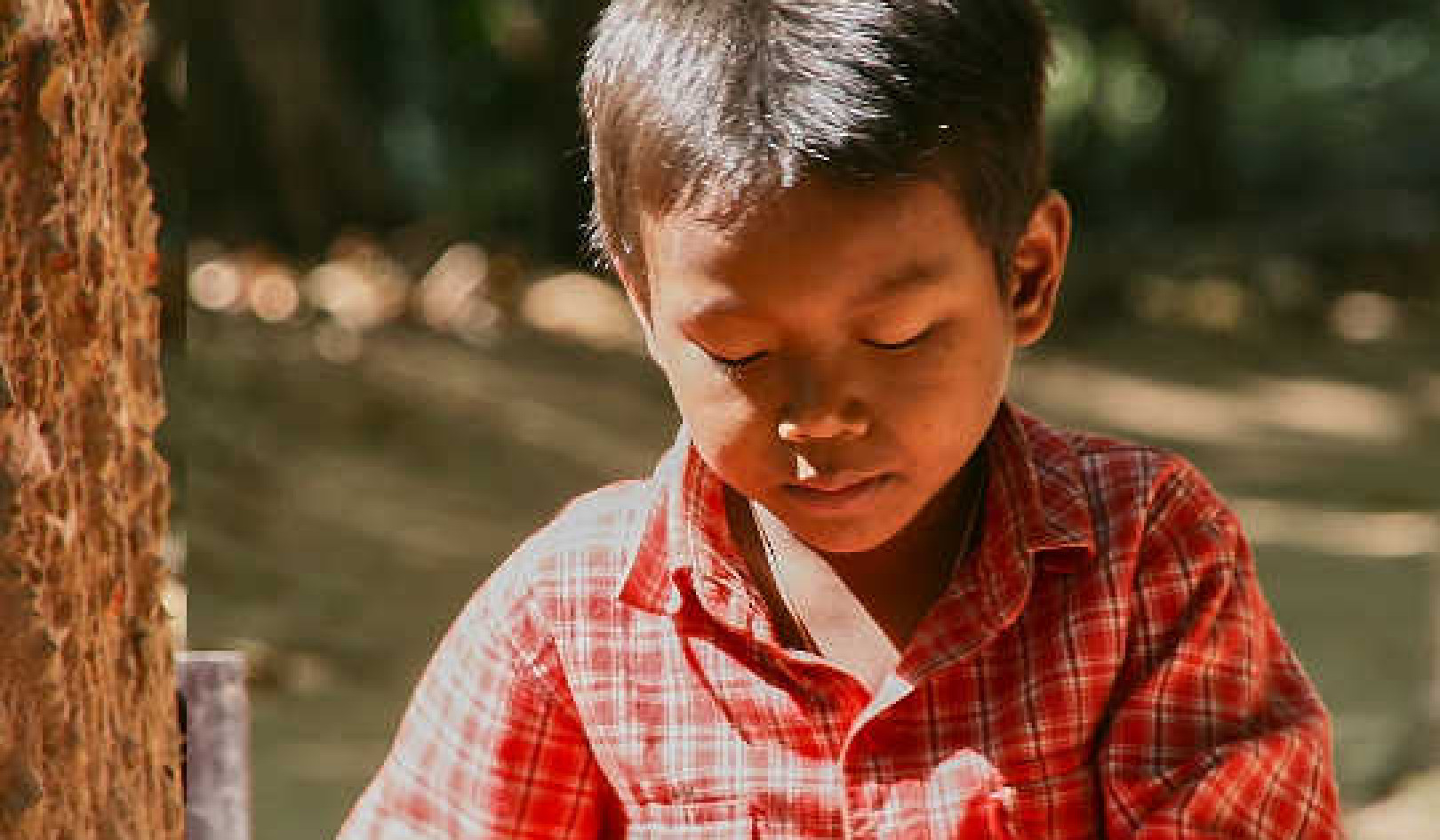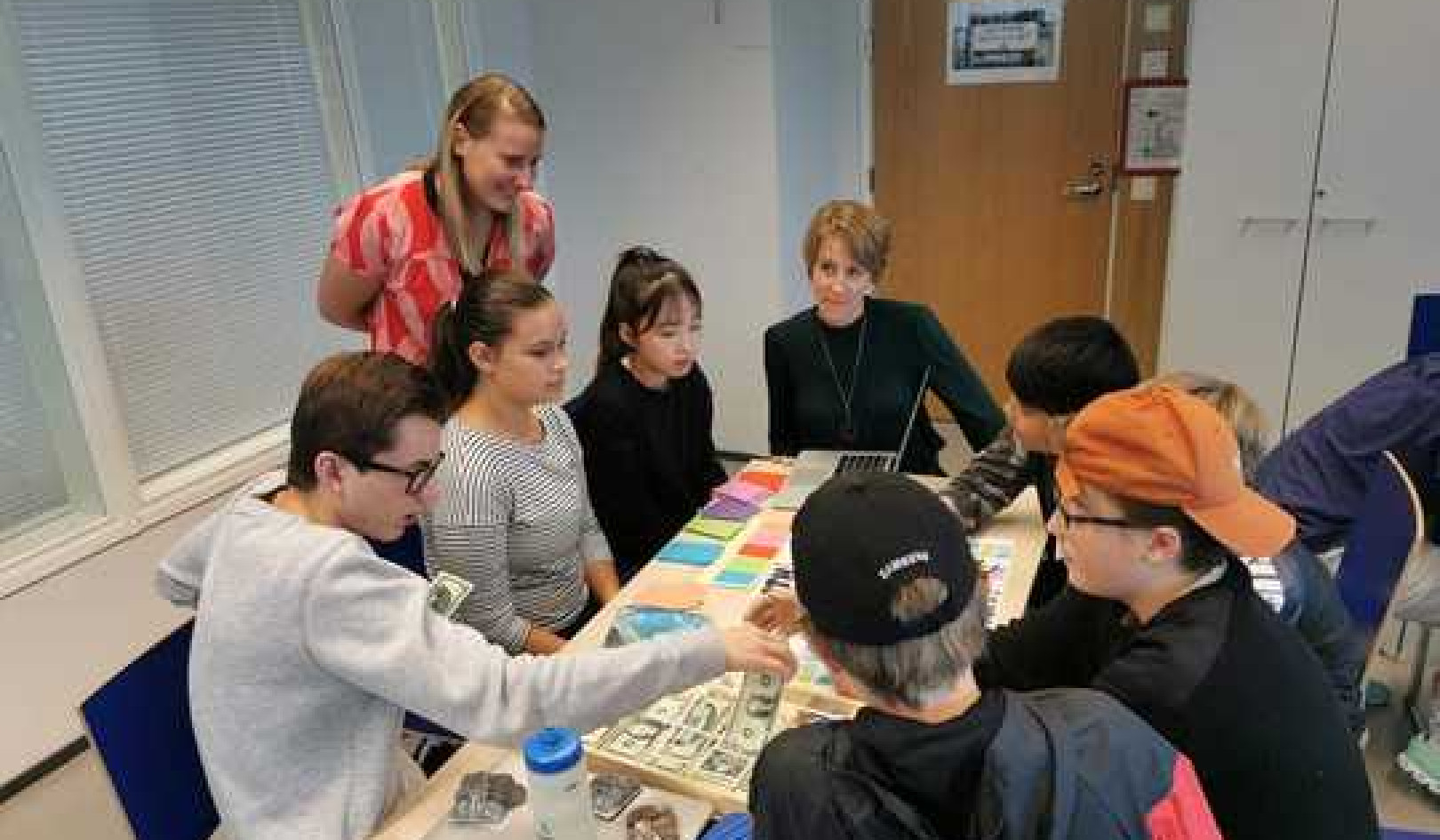
Image credit: ForestWander
Our identity, or ego, is the aspect of ourselves that attempts to control and plan our present and future experience. But as we all know, no matter how hard you try to control life, it somehow has a way of changing those plans. And yet upon self-reflection, you discover that these unexpected events helped to shape your life and allowed it further inner growth.
So what we think disturbs our life is actually fate and our unconscious conspiring against our rigid personality for the purpose of our evolution as individuals. As the softness of water slowly wears away at the hardness of rock, so too does fate wear away at the rigidity of our conditioned identity.
Striving for Control and Pleasure
The striving for control and pleasure is the major difference between organized religion and Lao-tzu’s Taoist understanding of fate. The faith of many religions is based on the hope that one day the events of life will turn in favor of our conditioning and pleasures, instead of understanding that to trust fate is to have faith in God.
The Taoism of Lao-tzu says trust and fate are a single thing. Living wu-wei brings trust into harmony with fate, not because events coincide with your individual desires, but because you have let go of these desires. (Translated into English from Lao-tzu’s perspective, wu-wei means “non-doing,” “non-action,” or “effortless action.”)
Fate and Synchronicity
The I Ching explains that all aspects of life have a deeper meaning because of synchronicity, which we experience both collectively and individually. When we trust the unfolding of fate in our lives, we become aware of synchronicity. Synchronicity is the language the Tao uses to offer its miraculous guidance. But the spiritually blind see this guidance merely as coincidence.
Wu-wei, if sincerely understood and followed, harmonizes our inner world with the outer world. This harmony is evident through the synchronicities we experience in our lives. Instead of the idea that fate is against us, synchronicity demonstrates that fate is a teacher that softens our hearts into an honest humility. If we can truly live wu-wei, the magic and miracles of the universe come to life through synchronicity. It is as if the source of Tao is speaking to us directly.
When you trust the workings of the universe, its evolutionary unfolding begins to be mirrored in your own experience. It is as if reality is guiding you and revealing a story about yourself and your place within the cosmic spectrum. Becoming aware of synchronicity demonstrates that there is more to the Way of the Tao than meets the eye.
Synchronicity proves that the material world is not mere gross matter but the unconscious intelligence of the Tao playing out through our own being. All forms of matter, whether of a human body or a rock, have the same intelligence within them at different degrees of magnitude. The intelligence of Tao synchronizes with the external world when one follows wu-wei. This trust harmonizes both the inner and outer world through the language of synchronicity.
Lao-tzu, like practically all sages, revered nature. In contemplating the interconnectedness of nature, the sages have discovered how we fit into and indeed belong to nature. Those who dwell only in the material world have no such spiritual vision. They do not see how everything is interconnected and unfolding into something that at the moment is beyond human comprehension. Many religions are based on the assumption that the world is merely gross matter and that spirit exists only in humans and not in anything else. Those who reside in pure awareness will know that this is absurd.
Synchronicity Is the Song of Spirit and Matter
If divine intervention and synchronicity exist, spirit and matter cannot be separate. Sincere contemplation of nature brings this unity of spirit and matter to the forefront of our awareness. This understanding is not found only in Lao-tzu’s Taoism, but it is common in the East and at the very core of many spiritual traditions.
The Hermetic tradition, as set out in a book called The Kybalion, explains in seven laws how spirit and matter, or in other words the inner and outer worlds, are in mutual relationship to each other. The laws of vibration and rhythm show how spirit and matter are in a constant dance, made up of subatomic particles, which ebb and flow at varying rates of magnitude according to the harmonic resonance between them:
III. The Principle of Vibration
Nothing rests; everything moves; everything vibrates.
V. The Principle of Rhythm
Everything flows, out and in; everything has its tides; all things rise and fall; the pendulum-swing manifests in everything; the measure of the swing to the right is the measure of the swing to the left; rhythm compensates.
Yet both of these are meaningless if they are not understood in relation to the first principle of Hermeticism, which indicates how there could be any fluctuations of vibration and rhythm in relation to spirit and matter. This principle states:
I. The Principle of Mentalism
THE ALL IS MIND; The Universe is Mental.
Mind here should not be mistaken for the superficial mind, or ego, which is only an accumulation of conditioning. Rather this mind is consciousness, which is the foundation of the entire universe.
Modern spiritual and scientific understanding are coming to the same conclusion: that everything is a manifestation of a unified field of consciousness. Consciousness, according to the sages, is not isolated within the mind of the human brain, but exists everywhere in three planes, which are defined in the wisdom traditions as the physical, mental, and spiritual planes.
The Dance of Life
The physical, mental, and spiritual planes of consciousness are connected by the vibration and rhythm of subatomic particles producing the dance of life. Consciousness dwells in everything, both space and matter, in a cosmic symphony. The individual is part of this symphony, and synchronicity is the harmony that is produced by this dance. Yet only those who trust the universe can perceive this dance with clear eyes.
Synchronicity does exist for everyone, even materialists and nonbelievers. But the ignorant pass such experiences off as coincidence and do not learn or grow from them. One who dwells on the spiritual plane perceives things as they are in holistic truth, while one who is primarily on the mental and physical planes still believes in a material world devoid of spirit.
In Confucius’s commentary on the I Ching, he explains that what we resonate deeply with will affect our experience and, consequently, the synchronicity experienced between the underlying spirit of the individual and the external world:
Things that accord in tone vibrate together. Things that have affinity in their inmost natures seek one another.
Whatever our mind is focused on will be the world we experience, because perception is molded by life through the thoughts, feelings, and emotions that we hold as important to us. Although the spiritual plane influences both the mental and physical planes, thoughts, feelings, and emotions exist on the mental plane and cannot become pure unless one dwells on the spiritual plane.
People who live only in the two lower worlds are driven by their conditioning; they are attracted only to those realms and suffer according to their apparent duality. On the other hand, those who live on the spiritual plane can see the one consciousness in harmony playing out in all forms.
Chuang-tzu poetically explains this spiritual perception: “When there is no more separation between ‘this’ and ‘that,’ it is called the still-point of the Tao. At the still-point in the center of the circle one can see the infinite in all things.”
All manifestations of consciousness relate to each other in a symbiotic harmony, but usually only a sage can recognize it. Synchronicity brings this awareness to the forefront of our knowledge when our perception has been marinated in a trust in wu-wei and the harmony of Tao.
The Way of the Tao
Lao-tzu refers to the “Way” (Tao). The most common understanding of the Way is the course of things: if we follow it in life, it will guide us as if we were floating down a stream to the greater ocean. When a stream flows down a mountain, it finds its own path. Similarly, living in harmony with nature is finding your own way: this is the Way of the Tao. Even when we block the stream or resist it, it will find its own way, and we will suffer from swimming against the current.
Consider a fallen leaf that is flowing on a stream. If you, like the leaf, allow the stream to carry you in this fashion, its power becomes yours. You become one with nature, without clinging, without attachment, and leaving the past behind to live completely in the present moment.
The sages of practically all spiritual traditions would suggest that when we follow the Way, it eventually humbles us and softens our hearts, which gives us greater knowledge of the Eternal Self. Conversely, when one sincerely chooses to remain present as the Eternal Self in stillness or self-inquiry, as many Buddhist and Hindu teachers would suggest, one becomes aware of the Way.
So both apparently opposing spiritual perspectives reach the same destination, even though the journey is different. Whether you attempt to remain present in stillness as the Eternal Self or you follow the Way, you will reveal the other, as if they were the same thing. When we look into the Eternal Self we discover the Way, and when we follow the Way we reveal the Eternal Self.
The Way of the Eternal Self
One experiences synchronicity when both the Self and the Way are in perfect correspondence. Through the experience of synchronicity one understands that one is in accord with the Tao both within oneself and in the evolutionary unfolding of the universe. This is the “real” Way of the Tao that Lao-tzu and other ancient masters referred to.
The Way of the Tao, then, is the Way of the Self. If you are sincere in exploring yourself, then the peaceful resonance of synchronicity will begin to bring magic to your life. The Way of the Self, or Tao, is to completely follow the reality of wu-wei into a future that is unknown.
Synchronicity is our safe guide into the wilderness of the universe. In this wilderness we discover that the Eternal Self and the Way are like everything else — unified. The essential wisdom of Lao-tzu is that everything goes together.
©2018 by Jason Gregory. All Rights Reserved.
Reprinted with permission of Inner Traditions Intl.
www.InnerTraditions.com
Article Source
Effortless Living: Wu-Wei and the Spontaneous State of Natural Harmony
by Jason Gregory
 A guide for achieving an enlightened mind through the art of non-doing. Revealing wisdom utilized by renowned sages, artists, and athletes who have adapted “being in the zone” as a way of life, the author shows that wu-wei can yield a renewed sense of trust in many aspects of your daily life, making each day more effortless. As an avid wu-wei practitioner, he provides keen insight on how you, too, can experience the beauty of achieving an enlightened, effortless mind while reveling in the process of life’s unfolding.
A guide for achieving an enlightened mind through the art of non-doing. Revealing wisdom utilized by renowned sages, artists, and athletes who have adapted “being in the zone” as a way of life, the author shows that wu-wei can yield a renewed sense of trust in many aspects of your daily life, making each day more effortless. As an avid wu-wei practitioner, he provides keen insight on how you, too, can experience the beauty of achieving an enlightened, effortless mind while reveling in the process of life’s unfolding.
Click here for more info and/or to order this book.
About the Author
 Jason Gregory is a teacher and international speaker specializing in the fields of Eastern and Western philosophy, comparative religion, metaphysics, and ancient cultures. He is the author of The Science and Practice of Humility and Enlightenment Now. Visit his website at www.jasongregory.org
Jason Gregory is a teacher and international speaker specializing in the fields of Eastern and Western philosophy, comparative religion, metaphysics, and ancient cultures. He is the author of The Science and Practice of Humility and Enlightenment Now. Visit his website at www.jasongregory.org


























